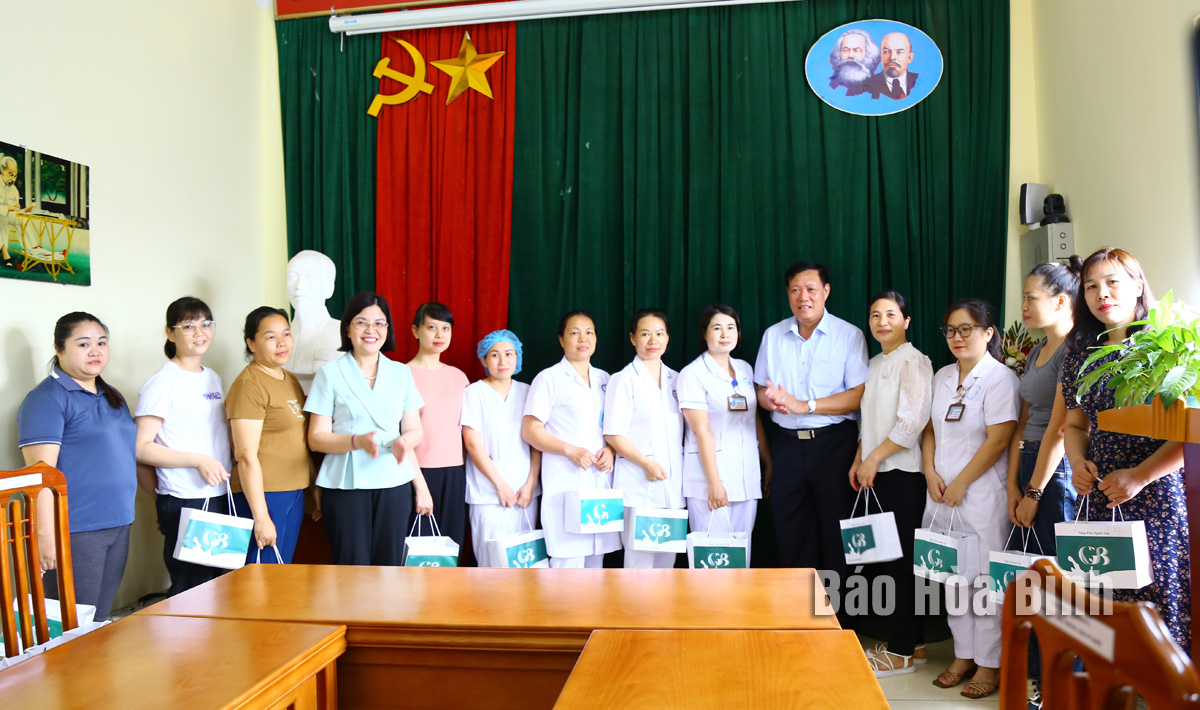
A working delegation from the Ministry of Health led by Deputy Minister Do Xuan Tuyen inspected the provision of vitamin A for children in Cao Phong district on June 1.
Deputy Minister of Health Do Xuan Tuyen and the working delegation inspect the organisation of the vitamin A supplementation campaign in Hop Phong commune of Cao Phong district.
The medical centre of Cao Phong district has issued various plans to prevent malnutrition in children in 2024, and implement the first phase of the vitamin A supplementation campaign for children aged 6-59 months.
As many as 3,000 capsules of 200,000 international units (IU) of vitamin A, and 450 capsules of 100,000 IU were allocated to the first phase.
During the campaign which takes place in Cao Phong town and nine communes from June 1-10, children will receive vitamin A doses, get measurements of height and weight, and get dewormed.
Children from 2 years old to under 6 years old in the district benefit from the campaign, including 415 from poor and near-poor households and those freshly escaping poverty.
Deputy Minister of Health Do Xuan Tuyen and leaders of the provincial Department of Health present gifts to members of the trade unions of the Cao Phong district medical centre who have difficult circumstances.
At the inspection, Deputy Minister of Health Do Xuan Tuyen laid a stress on the significance of vitamin A to children’s development. Speaking highly of the district’s campaign, Tuyen ordered competent sides to pay due attention to allocating the vitamin effectively, and raising the public awareness of the importance of vitamin A, ensuring that 98% of local kids get the supplements.
The district medical centre must enhance the communications work and instruct families to supplement daily vitamin A doses, helping reduce the rate of malnutrition in children, he added.
Tuyen and the working delegation presented 25 gift packages to members of the trade union of the district medical centre with difficult circumstances, and attended a signing ceremony for a welfare programme for workers held by the trade unions of the Ministry of Health, Ministry of Information and Communications and Med Group.
More than just an information technology teacher, Bui Van Nien is an inspiring figure who has nurtured the scientific curiosity and creative spirit of students in Vietnam’s ethnic minority communities.
Da Bac is the most disadvantaged mountainous district in Hoa Binh province, with ethnic minorities accounting for about 90% of its population. Over the past years, the district has mobilised resources to implement ethnic policies to improve the quality of life of local people.
In recent years, Hoa Binh province has consistently prioritised the protection, care, and education of children, particularly those from ethnic minorities and disadvantaged backgrounds, by creating a safe, healthy, and nurturing environment for their all-round development.
The Steering Committee for Tobacco Harm Prevention and Control of Hoa Binh province, in coordination with the Tobacco Harm Prevention and Control Fund, held a ceremony on May 28 in response to the World No Tobacco Day (May 31) and the National No Tobacco Week (from May 25 to 31). The event was chaired by Nguyen Van Toan, Standing Vice Chairman of the provincial People’s Committee and head of the Steering Committee.
Since 2021, the Center for Industrial Promotion and Industrial Development Consulting (CIIDC) under the Department of Industry and Trade has been implementing a school lighting model as part of the plan for using energy efficiently and economically in Hoa Binh Province in the pẻiod of 2021 - 2025. This model not only aims to improve the learning conditions and enhance the education quality, but it also promotes the message of energy saving, energy security, environmental protection and contributes to the goals of socio-economic development.
In the 2024 - 2025 school year, the entire Hoa Binh provincial education sector includes 520 educational institutions and schools. Among them are 13 ethnic boarding schools with 153 classes and 4,487 students. Four of these schools have met national standards, reaching 30.7 percent.




